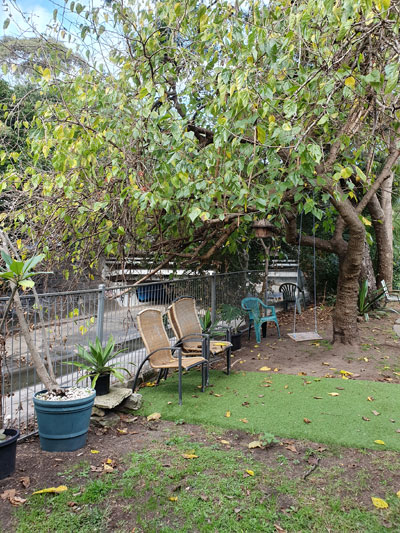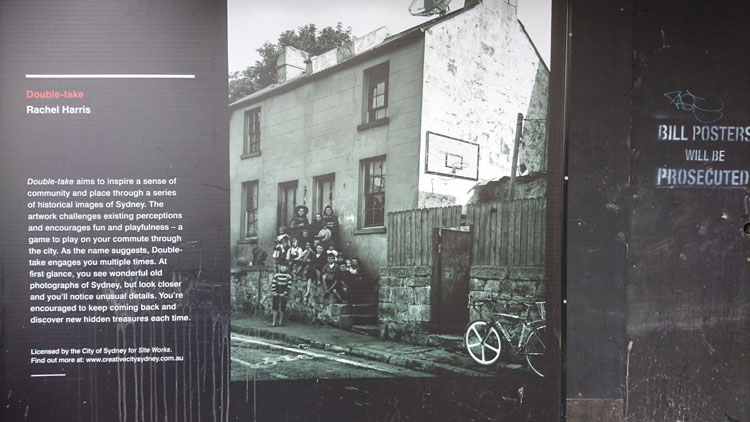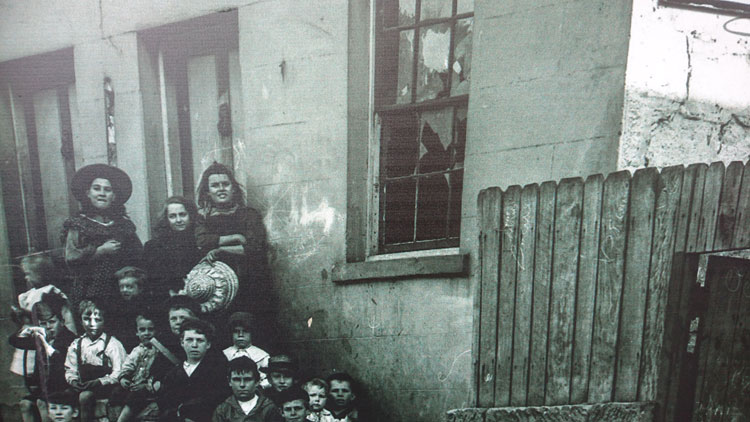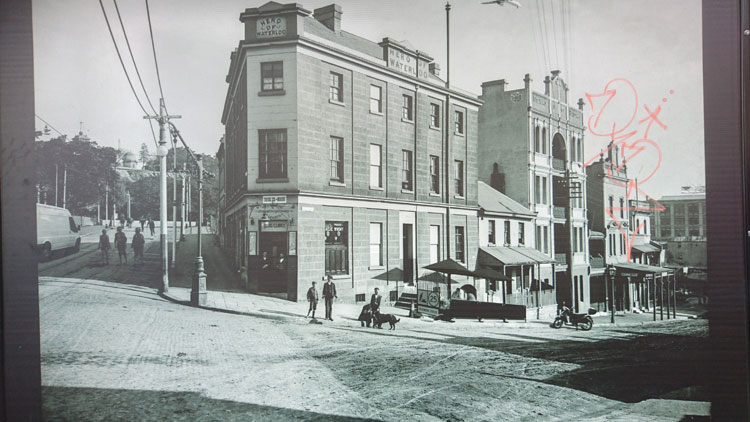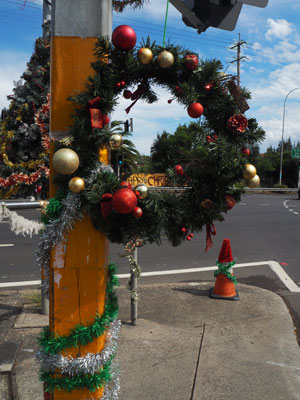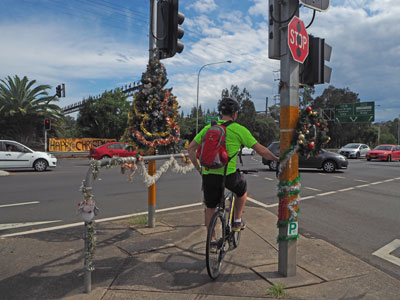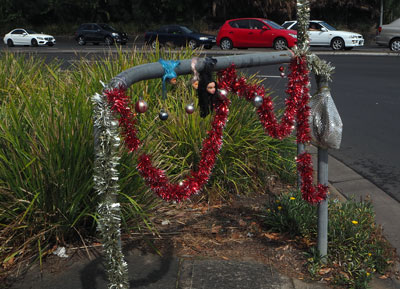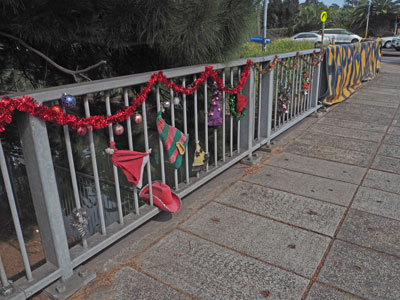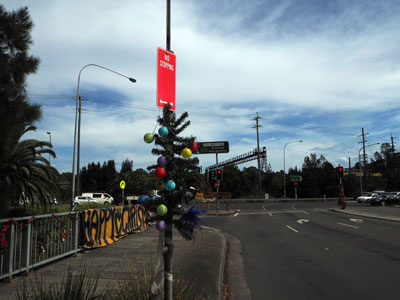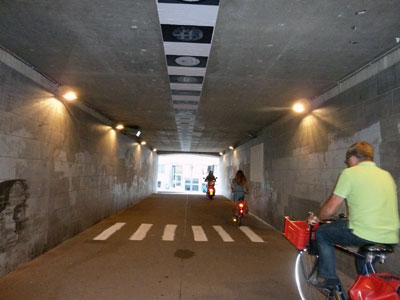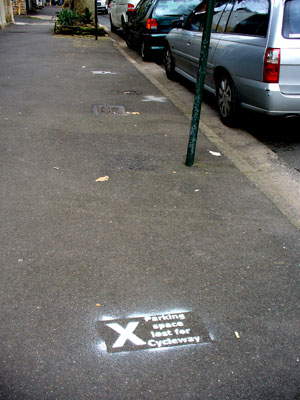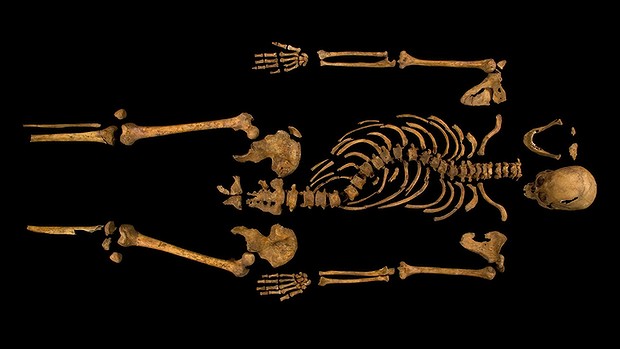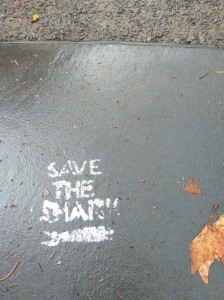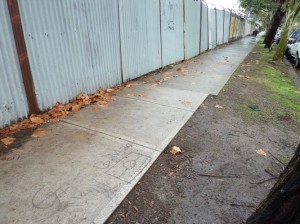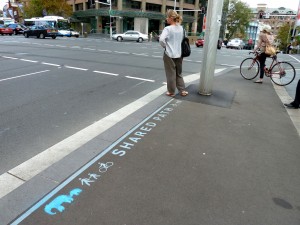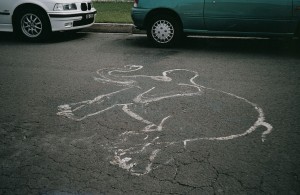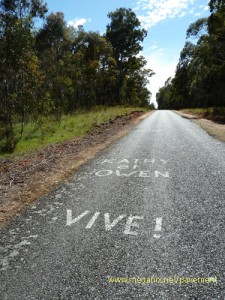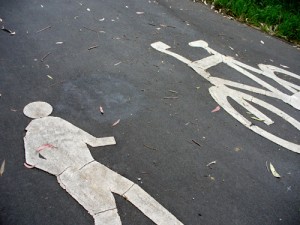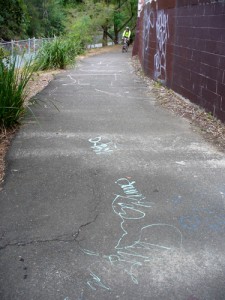Sunday 17 May 2020
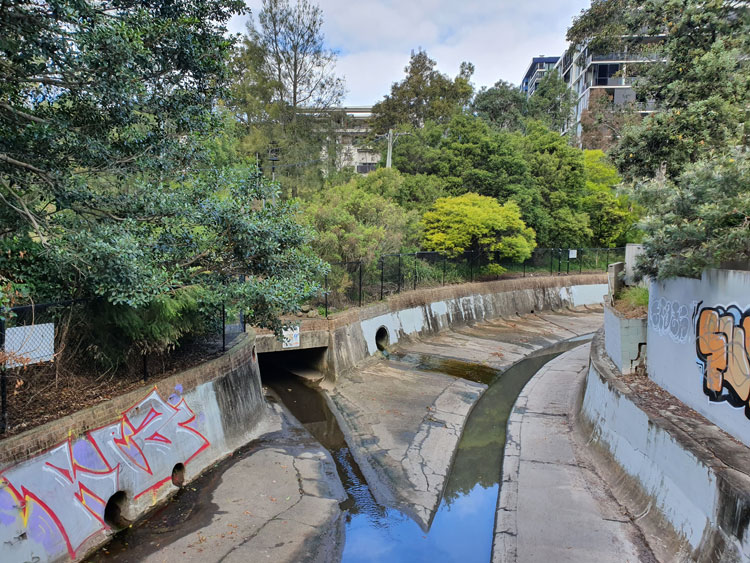
Johnstons Creek would have once been a pretty little bushland waterway but when the surrounding land was subdivided, houses and factories turned their backs on it. In 1838 it was described as ‘that invaluable stream of water’, but by 1892 it was condemned as a ‘fever bed’ with calls to commence the building of a canal because of the creek’s ‘menace to public health arising from the sewage nuisance’.
Our excursion this weekend takes us from one of the worst of those ‘nuisance’ areas at Wigram Road, to The Crescent in Annandale, and back again. The canal that was eventually built is wide but water is only flowing in the central gutter today. Signs warn us that this is a Flood Zone, so I’ll be back next time the weather is wild.
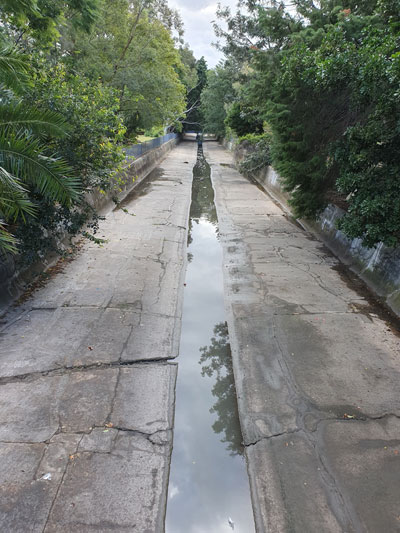
On either side of the canal is a string of tiny parks and reserves, each named separately, presumably as a way of keeping up with the backlog of municipal worthies who deserve recognition. In Canal Reserve we walk over several cheesy homilies neatly written in coloured chalk.
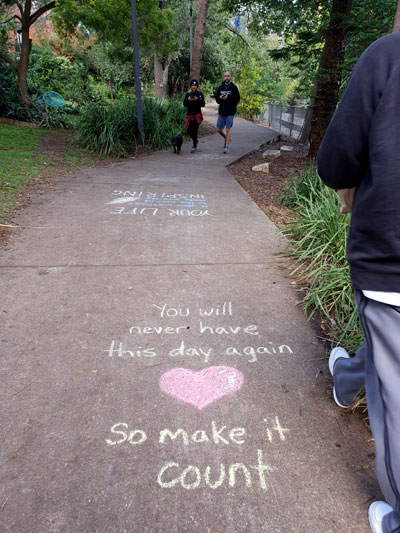
Beside JV McMahon Reserve we watch a pair of ducks emerge from where they have been dallying beneath a footbridge.
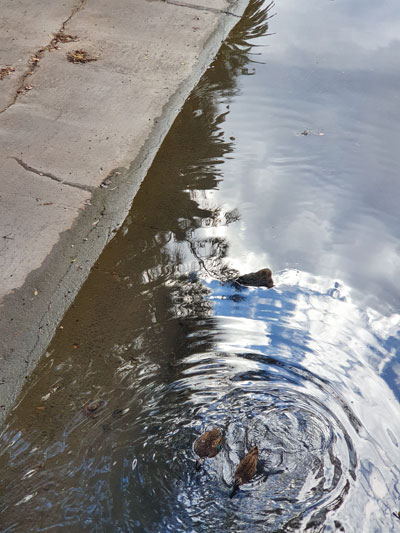
Near Minogue Crescent Reserve we see a woman practising solitary Twister beneath the arches of the area’s most impressive landmark, the Johnstons Creek Sewage Aqueduct.
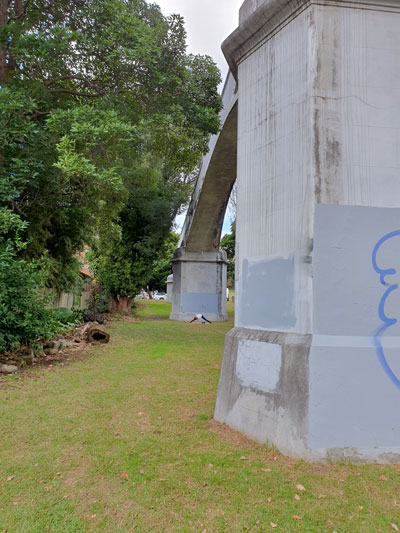
In AV Henry Reserve there is a bubbling spring in the centre of a swamp which, a notice informs us, may be affected by sewage overflow.
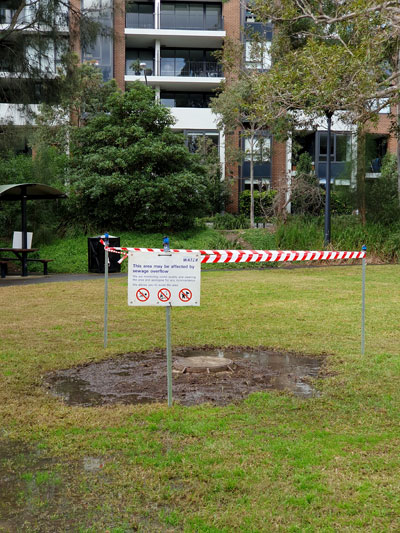
We cross the creek by walking over the road bridge at The Crescent, then turn back and descend into Smith & Spindler Park where, with its wider grassy sward and smoother path, we now encounter the dreaded joggers, spandex cyclists, whole families on wheels, and off-leash dogs. We notice that a children’s playground has been reopened just this week.
To our left is the canal which, for some reason, has been blocked from view by a dense planting of casuarina trees. To our right, beyond the grass, is Nelson Lane, currently decorated at regular intervals with piles of discarded domestic ware, the product of lockdown busy-ness.
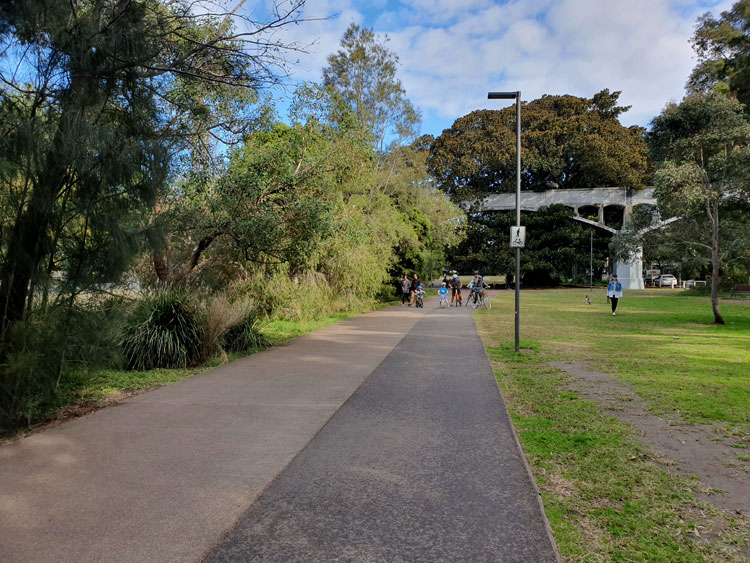
Our limbs still intact and our lungs too, we hope, we press on back to Wigram Road, via the narrower Hogan Park, where a town house dweller has annexed public space outside their back gate to create a canalside pleasure dome complete with outdoor chairs, a swing, pot plants and plastic grass.
